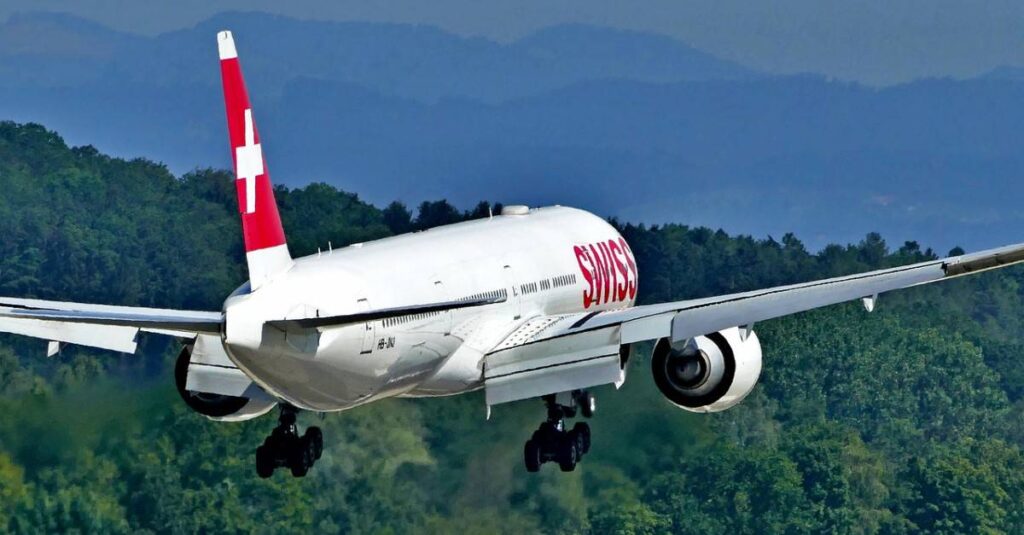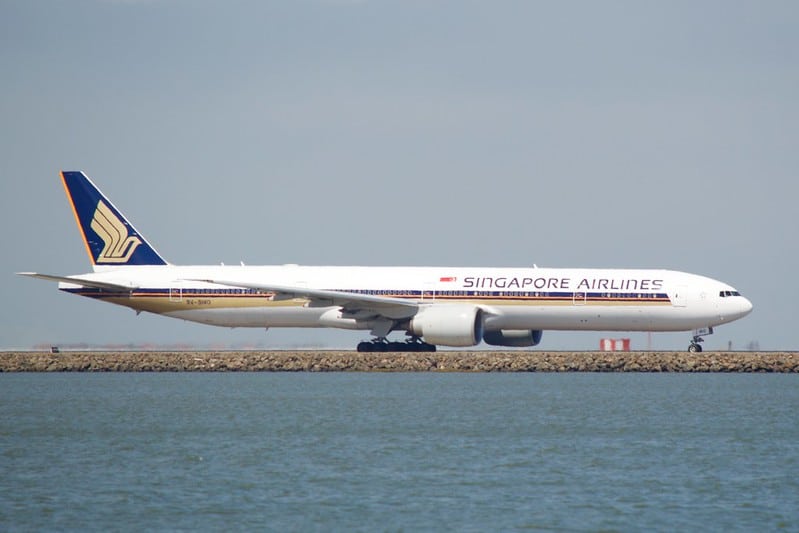
While flying into a Class Charlie airspace you’re on a four-mile final and ATC tells you “caution wake turbulence for heavy aircraft landing.” You know what to do since your instructor taught you proper wake turbulence avoidance techniques, but why are some airplanes called “heavy”?
According to an FAA notice from 2010 (N JO 7110.525), “Aircraft capable of takeoff weights of 300,000 pounds or more, whether or not they are operating at this weight during a particular phase of flight, will now be classified as a ‘Heavy’ aircraft according to FAA and ICAO weight classification standards.”
It’s one thing to know why and when an aircraft is called heavy, but it’s more important to know how this might impact you as a pilot. We’ll cover examples of commonly heavy aircraft and discuss the responsibilities of ATC (and you as the pilot in command) when flying around these aircraft.
What are examples of ”heavy” aircraft?
Since the FAA now requires any aircraft with a maximum takeoff weight (MTOW) in excess of 300,000 pounds to use the term “heavy,” general aviation pilots might start noticing this phrase more often, especially when flying near busy airspace such as Charlie or Bravo.
Some of the more common aircraft that fall under the “heavy” category include the Boeing 747, 767, 777, and 787 aircraft as well as the Airbus A300, A310, A330, A340, and A350 aircraft.

Image Source
So does an aircraft have to weigh over 300,000 pounds in order to be described as “heavy” over the radio? Not necessarily.
All aircraft that weighs more than 41,000 pounds, maximum certificated takeoff weight, up to but not including 300,000 pounds, are classified by the FAA as “Large” aircraft. This change reclassifies all B757 aircraft as “Large” aircraft; however, controllers are required to apply the special wake turbulence separation criteria as specified in paragraph 7-3-9 of the Aeronautical Information Manual (AIM).
Boeing 757s are technically large airplanes based on their MTOW (220,000 pounds), but because they create air turbulence in their wakes more like a heavy aircraft, the FAA requires air traffic controllers to treat them as such.
Large, Heavy, and Super Heavy Designations
There is actually a weight classification that is heavier than heavy. Because the FAA recognizes two types of very big heavy aircraft as being extra hazardous to fly behind, they’re described as “super.”
These super-sized aircraft are the Ukraine-built Antonov An-225, which has an MTOW of 1.41 million pounds, and the Airbus A380-800 (also called the A388), which has an MTOW of 1.27 million pounds.
The super aircraft create such large wake turbulence that the FAA had to create their own distance-between-aircraft requirement section in AIM 7-3-9.
Weight Categories
Here’s how the weight categories break down, high to low:
- Super Heavy: Only two categorized due to their vastly high MTOW and wing span.
- Heavy: MTOW of 300,000 pounds or more.
- Large: MTOW more than 41,000, but less than 300,000 pounds.
- Medium: MTOW more than 12,500, but less than 41,000 pounds.
- Small: MTOW of 12,500 pounds or less.
Practical Application
How does this impact you as a pilot? I always had a hard time retaining and applying knowledge unless it seemed applicable to what I was doing, so let me emphasize that even if you are only flying small general aviation aircraft, recognizing these weight classifications is very important to you on a daily basis. The reason is wake turbulence.
Review of Wake Turbulence
It might have been a while since you or your instructor discussed wake turbulence avoidance. If so, see our article on “How does an airplane form wake turbulence?” In essence, the wings of planes of all sizes create vortices—counter-rotating cylindrical air masses— that can greatly disrupt the flight path of smaller aircraft.
The bigger the aircraft, the larger the wake they create. Think of large ships and how much water they displace when moving about. The aircrafts’ wakes are greatest during takeoffs and landings. For that reason, air traffic controllers say the word “super” or “heavy” when identifying nearby aircraft that fall under those categories, so pilots of other planes will know to stay clear.
In addition to the weight of the plane, the powerfulness of the vortices is affected by the speed of the plane and the shape and span of its wings. According to the FAA, a vortex speed of almost 300 feet per second has been recorded.

Image Source
Vortices act differently at different elevations. They can be blown about by winds, and they generally sink and lose strength over time, though they may also rise under certain conditions.
When a smaller plane is caught in a vortex, it will be rolled at a rate the pilot may not be able to counter, causing the plane to crash. Even super or heavy planes can be adversely affected by vortices from a super or heavy aircraft.
Wake turbulence avoidance comes into play in two different places: during take off and landing, and enroute. Let’s cover both of these scenarios in more detail as it relates to heavy aircraft.
Avoiding Wake Turbulence from Heavy Aircraft During Takeoff/Landing
As mentioned, wake turbulence is greatest during takeoff and landing and when aircraft are “heavy, clean, and slow”. Because you often cannot see the actual wake vortices, a good visualization technique to use in order to avoid wake turbulence is to “remain in the bowl”.

This is discussed in chapter five of the Pilot’s Handbook of Aeronautical Knowledge, which says you should: “Rotate prior to the point at which the preceding aircraft rotated when taking off behind another aircraft,” and “Approach the runway above a preceding aircraft’s path when landing behind another aircraft and touch down after the point at which the other aircraft wheels contacted the runway.”
ATC actually has guidelines for how much time should elapse between departures depending on the weight classification of the aircraft. These guidelines can be found in Section 7-3-9 of the AIM. This goes to ensure safe departures given the intensified wake turbulence from heavy and super heavy aircraft.
But what about in other phases of flight? Wake turbulence still occurs and is a hazard outside of takeoff and landing, especially when it comes to heavy aircraft.
Avoiding Wake Turbulence Enroute
The Pilots Handbook of Aeronautical Knowledge says in Chapter 5 to “avoid following another aircraft on a similar flight path at an altitude within 1,000 feet.” This is illustrated by the diagram below:

The above image is a practical way to avoid wake turbulence during flight. Often times it will be your discretion as a pilot to remain clear of wake turbulence, but interestingly, ATC also has regulations when it comes to separation, particularly for heavy aircraft.
According to 7-3-9 of the AIM, the FAA requires the controllers to maintain specific minimum separation between enroute aircraft. The required separation is as follows:
“Separation is applied to aircraft operating directly behind a super or heavy at the same altitude or less than 1,000 feet below, and to small aircraft operating directly behind a B757 at the same altitude or less than 500 feet below:
- Heavy behind super – 6 miles
- Large behind super – 7 miles
- Small behind super – 8 miles
- Heavy behind heavy – 4 miles
- Small/large behind heavy – 5 miles
- Small behind B757 – 4 miles”
The Boeing 757 might seem a little random as it’s the only category that specifically calls out a particular aircraft model. This is because Boeing 757’s are technically large aircraft based on their MTOW (220,000 pounds), but because they create air turbulence in their wakes more like a heavy aircraft, the FAA requires air traffic controllers to treat them as such.
Conclusion
A “heavy” designation means an aircraft has a certified maximum takeoff weight (MTOW) of 300,000 pounds or greater. This designation helps controllers better alert and space aircraft accordingly that might be more susceptible to the increased wake turbulence created by these heavy aircraft. Not only is it useful to be familiar with what a “heavy” designation means to you and your particular flight, it is also extremely valuable to be familiar with the majority of common aircraft you might encounter so that you can recognize them on the radio and calculate speed and spacing requirements as needed.



